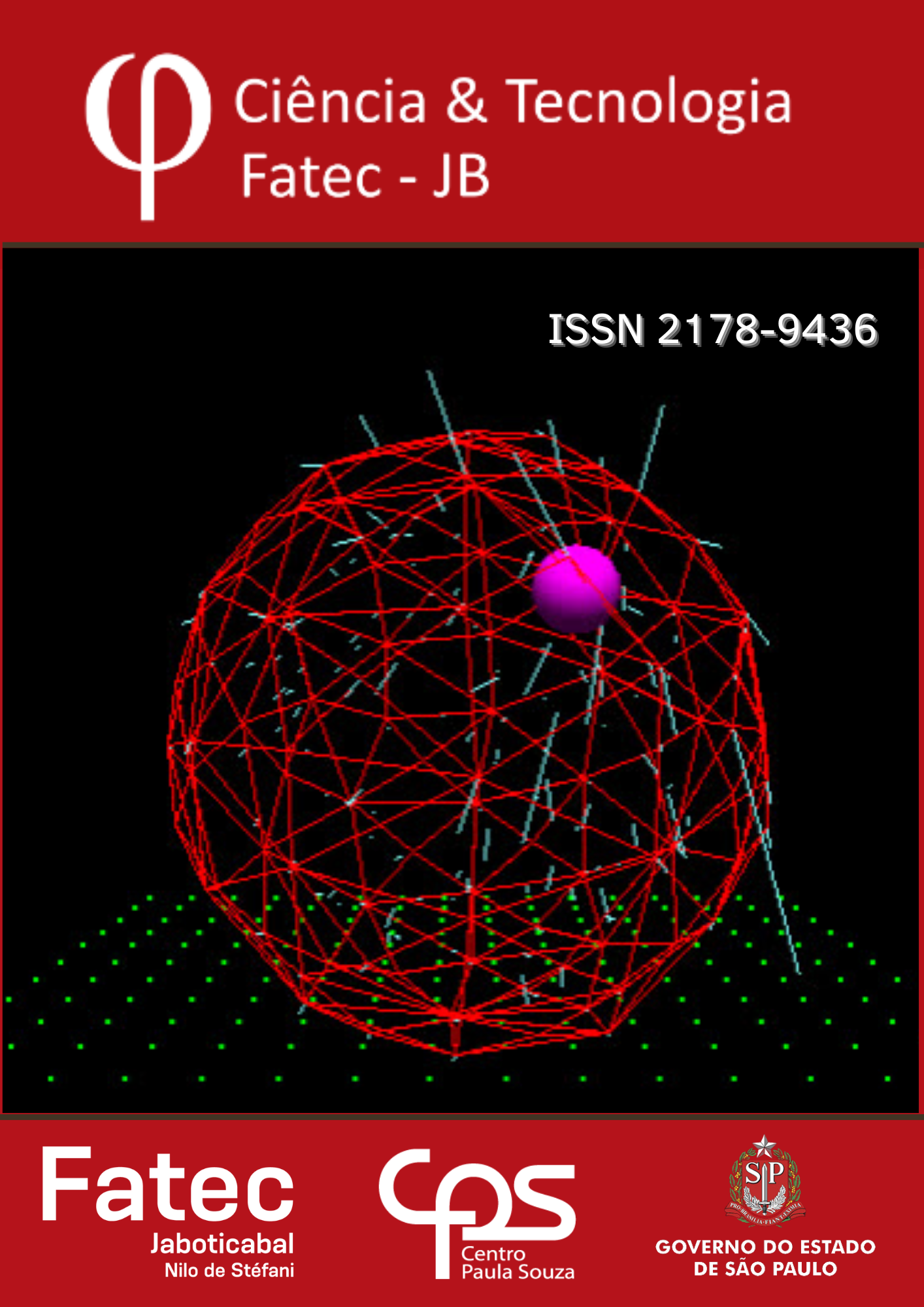CHANGES IN WORKING HOURS
Brief discussion about the Brazilian situation and the end of the 6x1 scale
DOI:
https://doi.org/10.52138/citec.v17i01.420Keywords:
impacto socioeconômico; jornada de trabalho; produtividade; tecnologia.Abstract
This article presents the debate taking place in the national panorama about the change in working hours, with an emphasis on the end of the 6x1 scale, analyzing the opinions generated and the social, economic and legal impacts of this proposal in Brazil. Based on recent research data and specialized literature, we seek to understand the effects of demands for better working conditions and the adaptation of companies to global trends. The study evaluates the implications for workers and employers, highlighting the importance of a balance between productivity and quality of life, methodologically contributing to this from the reference literature review. Finally, it is considered that the ambivalence of the case – on the one hand companies and the need to increase productivity, competitiveness and cost reduction, and on the other the social, cultural and economic impacts on society in general – corroborates with the importance of further studies and research in the area.
Downloads
References
ARAÚJO, A. M. V.; ANTUNES, T. F. E.; REZENDE, B. A.; MEDEIROS, A. M. de. (2024). Associação entre limitação no trabalho por causa da voz, condições de trabalho e vulnerabilidade social de escolas metropolitanas no Brasil. Audiology - Communication Research, 29, e2898. Disponível em: https://www.scielo.br/j/acr/a/VRh6vWLTqcYWQ7ncfTZ66gQ/?lang=pt&format=pdf. Acesso em: 10 fev. 2024.
ARAÚJO, T. M. de; LUA, I. (2021). O trabalho mudou-se para casa: trabalho remoto no contexto da pandemia de COVID-19. Revista Brasileira De Saúde Ocupacional, 46, e27. Disponível em: https://www.scielo.br/j/rbso/a/LQnfJLrjgrSDKkTNyVfgnQy/?lang=pt. Acesso em: 16 jan. 2025.
BRASIL. Decreto-Lei 5.452, de 1º de maio de 1943. Consolidação das Leis Trabalhistas – CLT. Disponível em: http://www.planalto.gov.br/ccivil_03/decretolei/del5452.htm.
Acesso em: 20 out. 2024.
BRASIL. Constituição da República Federativa do Brasil. Brasília: 1988. Disponível em:
http://www.planalto.gov.br/ccivil_03/constituicao/constituicao.htm. Acesso em: 10
out. 2024.
BRASIL. Lei nº 13.467, de 13 de julho de 2017. Altera a Consolidação das Leis do Trabalho (CLT), aprovada pelo Decreto-Lei nº 5.452, de 1º de maio de 1943, e as Leis n º 6.019, de 3 de janeiro de 1974, 8.036, de 11 de maio de 1990, e 8.212, de 24 de julho de 1991, a fim de adequar a legislação às novas relações de trabalho. Disponível em: https://www.planalto.gov.br/ccivil_03/_ato2015-2018/2017/lei/l13467.htm. Acesso: 20 dez. 2024.
BAUMANN, R (org.). Indicadores Quantitativos da OCDE e o Brasil: reformas estruturais e crescimento inclusivo. Rio de Janeiiro: Ipea, 2024. Disponível em: DOI: http://dx.doi.org/10.38116/9786556350783. Acesso em: 20 nov. 2024.
CARDOSO, A. N.; FERNANDES, B. H. R.; SOUSA, P. R., CRUZ, M. A. Relações entre produtividade, satisfação no trabalho, equilíbrio entre vida pessoal-profissional e estresse no home office. Revista de Carreiras e Pessoas, vol. 15, n. 1, 2025, p.27-53. Disponível em: https://revistas.pucsp.br/index.php/ReCaPe/article/view/61499/46782. Acesso em: 26 jan. 2025.
CARDOSO, A. C. M; LIMA, C. R. de. A negociação coletiva e as possibilidades de intervenção nas situações de risco à saúde no trabalho. Revista Brasileira de Saúde Ocupacional. 2020; 45: e2. Disponível em: https://www.scielo.br/j/rbso/a/MsY5LTzXJmqJ7TGmZ7xTNsq/?format=pdf&lang=pt. Acesso em: 11 dez. 2024.
CRUZ, R. M., BORGES-ANDRADE, J. E.; DE ANDRADE, A. L.; MOSCON, D. C. B.; ESTEVES, G. G. L.; VISEU, J.; LÓPEZ-NUÑEZ, M. I.; ABACAR, M.; KIENEN, N.; BARROS, S. C.; KNAPIK, J.; CASSIANO, S.; PORTO, J. B. (2023). Transformação Digital e Flexibilização do Trabalho [Editorial]. Revista Psicologia: Organizações e Trabalho, 23(3), I-III. https://pepsic.bvsalud.org/pdf/rpot/v23n3/1984-6657-rpot-23-3-000i.pdf. Acesso em: 20 dez. 2024.
FUNDAÇÃO GETÚLIO VARGAS (FGV). Diferenças de Gênero no mercado de trabalho. 2023. Disponível em: https://portal.fgv.br/artigos/diferencas-genero-mercado-trabalho. Acesso em: 09 jan. 2025.
GONÇALVES, H. C. B.; SILVA, P. H. A; SOARES, V. Saúde cardiovascular e carga horária de trabalho entre trabalhadores universitários. Revista Brasileira de Medicina do Trabalho. 2024; 22(3). Disponível em: https://cdn.publisher.gn1.link/rbmt.org.br/pdf/v22n3a1211.pdf. Acesso em: 13 dez. 2024.
GONZAGA, G. M.; MENEZES FILHO, N. A.; CAMARGO, J. M. (2003). Os efeitos da redução da jornada de trabalho de 48 para 44 horas semanais em 1988. Revista Brasileira De Economia, 57(2), 369–400. https://www.scielo.br/j/rbe/a/VcHZsYRpkCyNxRSxnMP7WWv/?lang=pt. Acesso em: 12 jan. 2025.
GUERRERO, W.; BORGES, R. N.; AMARAL, M. da P. R. (2024). A flexibilidade no horário de trabalho e seus impactos na produtividade. Revista Contemporânea, 4(12), e7035. Disponível em: https://ojs.revistacontemporanea.com/ojs/index.php/home/article/view/7035. Acesso em: 18 jan. 2025.
TESSARINI JUNIOR, Geraldo; SALTORATO, Patrícia. Redução da Jornada de Trabalho como Instrumento Político, de Gestão e de Controle. Revista Organizações & Sociedade, 2022, 29(103), 740-765. Disponível em: https://www.scielo.br/j/osoc/a/hjTJCfgg3f7dgxrQRfcgJfS/?format=pdf&lang=pt. Acesso em: 20 dez. 2024.
ORGANIZAÇÃO PARA A COOPERAÇÃO E DESENVOLVIMENTO ECONÔMICO (OECD).Compendium of Productivity Indicators. 2023. OECD Publishing, Paris. Disponível em: https://doi.org/10.1787/74623e5b-en. Acesso em: 13 dez. 2024.
OLIVEIRA, J. de .; FARIA, J. H. de. Teletrabalho compulsório: reorganização e desorganização do trabalho docente. REAd. Revista Eletrônica de Administração (Porto Alegre), v. 30, n. 3, p. 1285–1315, set. 2024. Disponível em: https://www.scielo.br/j/read/a/WhG6YgSGNxTfDwL56FCGZFK/?lang=pt&format=pdf. Acesso em: 22 nov. 2024.
PINA, J. A.; STOTZ, E. N. Participação nos lucros ou resultados e banco de horas: intensidade do trabalho e desgaste operário. Revista Brasileira de Saúde Ocupacional, v. 36, n. 123, p. 162–176, jan. 2011. Disponível em: https://www.scielo.br/j/rbso/a/7GyzpNsWcRC7Hw4mpKkN6Gf/?format=pdf&lang=pt. Acesso em: 12 nov. 2024.
PORTAL G1, 2024. Fim do 6x1? Deputados tentam emplacar PEC para reduzir jornada de trabalho; Congresso já engavetou tese antes. Disponível em: https://g1.globo.com/politica/noticia/2024/11/11/6x1-pec-para-reduzir-jornada-de-trabalho.ghtml. Acesso em: 15 dez. 2024.
ROMAR, Carla Teresa Martins. Direito do Trabalho Esquematizado. 5ª ed., Saraiva Educação, 2018.
SAAD, E. G.; SAAD, J. E.; CASTELLO BRANCO, A. M. S. CLT Comentada. 37ª ed., LTr, 914 p. 2004. Disponível em: https://www.academia.edu/31912171/CLT_Comentada. Acesso em: 20 nov. 2024.
SATO, L., BERNARDO, M. H.. (2005). Saúde mental e trabalho: os problemas que persistem. Ciência & Saúde Coletiva, 10(4), 869–878. Disponível em: https://doi.org/10.1590/S1413-81232005000400011. Acesso em: 19 dez. 2024.
SOUZA, D. C. de .; LIMA, M. P.; LIMA, C. A. da S. (2023). Processo de (Re)Organização do Trabalho Produtivo e Reprodutivo de Mulheres na Confecção. Revista De Administração Contemporânea, 27(5), e220292. Disponível em: https://www.scielo.br/j/rac/a/Vr53jyYHSLNGWbsr7SFg9Kq/?lang=pt&format=pdf. Acesso em: 20 jan. 2025.
Downloads
Published
How to Cite
Issue
Section
License
Copyright (c) 2025 Ciência & Tecnologia

This work is licensed under a Creative Commons Attribution 4.0 International License.











